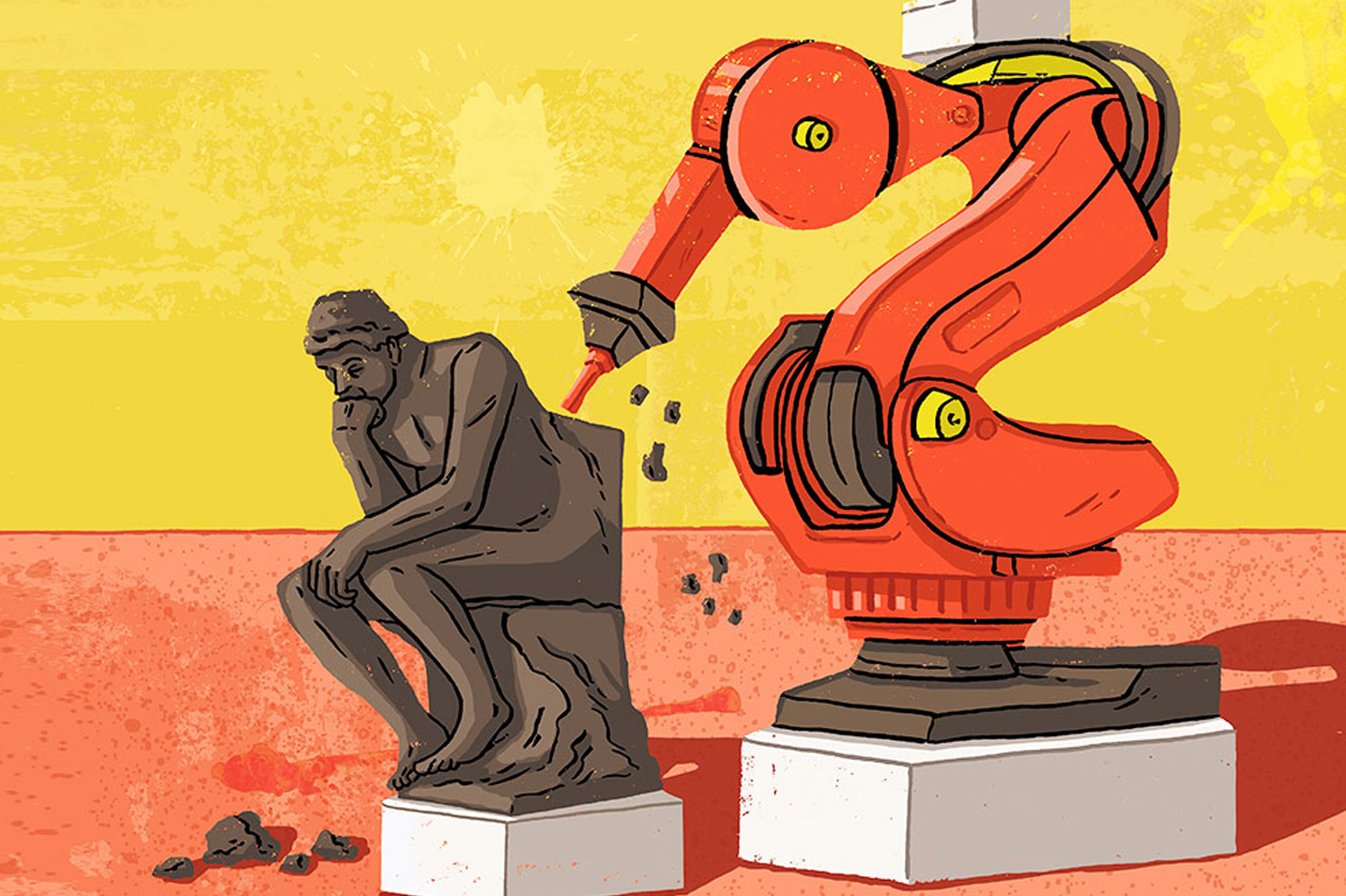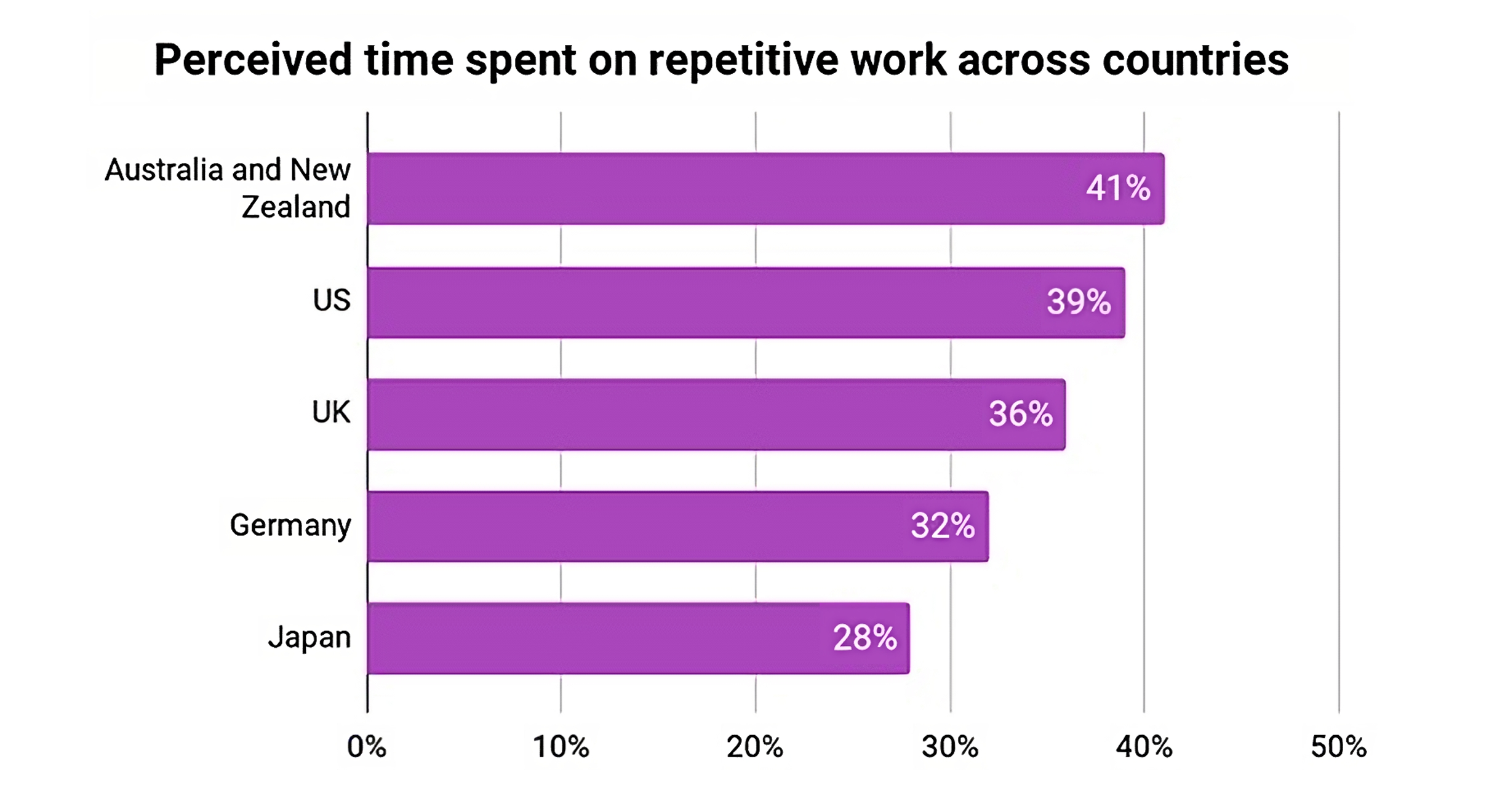Home [spacer] Process Automation: It’s not a Circle, it’s a Spiral
It's not a Circle, it's a Spiral!

It is becoming increasingly difficult (some may say almost impossible) to find a company which has not in some way delved into AI. It is outright impossible not to find the term “AI” anywhere on its marketing materials. Still, another term gets thrown around even though AI constantly tries to insert itself in it. That is: “Process Automation”.
It’s weird to think that the first time the word “automaton” was mentioned, it was mentioned by a poet, not an engineer. Homer described the word "automaton" as the door which automatically opens or a wheeled tripod which is moving on its own. Still, unlike today, it did not involve any sense of autonomy and for some sadly, it still does not.
Let’s be honest…

Whenever someone throws around the term “Process Automation”, the first thing that comes to everyone’s mind is a big stack of papers which involve some kind of repetitive work. To be fair, it is firmly based on our collective experience, or at least on perceived time spent on getting rid of the aforementioned stack of papers.

Fig. Perceived time spent on repetitive work across countries (Clockify.me)
It's not just about those same old tasks gobbling up all our time. What's even more surprising is how many things we end up doing over and over again just because no one read Homer's poetry. From Germany (5 hours and 9 minutes per week) to Japan (2 hours and 56 minutes per week), people are spending time not only on repetitive but also on duplicate work.

To get back on the track, of course there is repetition and duplication of work in every enterprise. Process automation in its bare essentials can get rid of some of it saving the time and the money. Also, as previously mentioned, anyone can just throw in the term AI to “enhance” or “further improve” process automation but the problem is more often than not rooted somewhere deeper.
Back on the predetermined track

Like Homer, like James Watt, like a lot of visionaries and company leaders, automating any kind of work includes some kind of control mechanism (physical or virtual) to automatically follow a sequence of operations, or respond to predetermined instructions. In other words, if one wants to reduce that hypothetical (or the real) stack of papers, the same one must create a repeating flow of operations and triggers.
Around 4 years ago an event, which pushed every industry into overdrive, occurred. Rapid digitization was a must for some, and the death for others. However terrifying that event was, it got a lot of us thinking about getting rid of the papers entirely. It got us thinking about automation without the term predetermination. It got us excited about the fact that the stacks of papers could be gone forever. However, it took almost two years for the real missing piece of this paperless, stackless and never again repetitive puzzle to appear.

Of course, it was the massive increase of AI popularity. Not just “an AI” since AI was popular even before ChatGPT became a thing, but the generative AI which promised the long-forgotten autonomy. Homer’s automatic door could now suddenly open when they “feel” like they should, his wheeled tripod could not just move but also choose where and when to move, the stack of repetitive jobs could truly disappear, and not just be reduced. Why is there a “could” in each example?
It starts with an idea.

The true process automation in any kind of work cannot (or at least shouldn’t) be generated from the bucket of existing workflows. Its creation and details are too specific to be automated, and its benefits are too specialized to be easily foreshadowed by an AI. In other words, to reap the true benefits of process automation, one cannot just throw a bunch of variables at the screen or as a prompt and expect results.
Still, putting everything on the screen provides a barely sufficient and structured overview to start the brainstorming. The entire idea of process automation thrives on brainstorming since the majority of work is done in a creative way. In similar fashion in which psychologists lead their patients to the conclusion which they already have in them, just by putting the business problems and the processes entangled with them in one place, shapes the new and creative ideas which help to solve them.
Just like in times of the inception of the word automation (even though now we’re talking about IT systems), it’s not the engineers who need to look at the problems and conjure ideas. It’s the poets of the enterprise world. AI, as helpful as it may be one day, cannot be the creative lead on the process automation as some marketing materials can lead one to believe. Generative AI learning revolves around rehashing the old ideas which is an immediate block towards the creativity. This creativity is almost always required when automating the processes in enterprise.
It's not a circle, it’s a spiral!

Still, some basic jobs in enterprise are circular and they could and maybe even should be automated in a good old “getting rid of the paperwork” way. Few percentages here and the other few there could all add up and save a lot of time for the company but why does it still feel like pushing the progress into a corner?
Process automation with, or without AI, cannot push any enterprise into the real digital transformation. It helps, it speeds things up, it keeps the stacks of paper at minimum, but it does not change anything. The processes should not be just automated, they should not be thrown at the board while AI tries to dig the data for suggestions…they should be rethought.
Yes, rethinking your business takes a lot of tries and it should sometimes seem to be going in circles...but it’s not a circle, it’s a spiral. Automating what you have and do will surely reduce the radius of the circle but when observed from another dimension (literally) it is an equivalent of going down the spiral. Broadening one’s views and rethinking the core processes is a long and difficult task, but with a right platform underneath for support, it can actually lead away from the corner towards an agile future.
